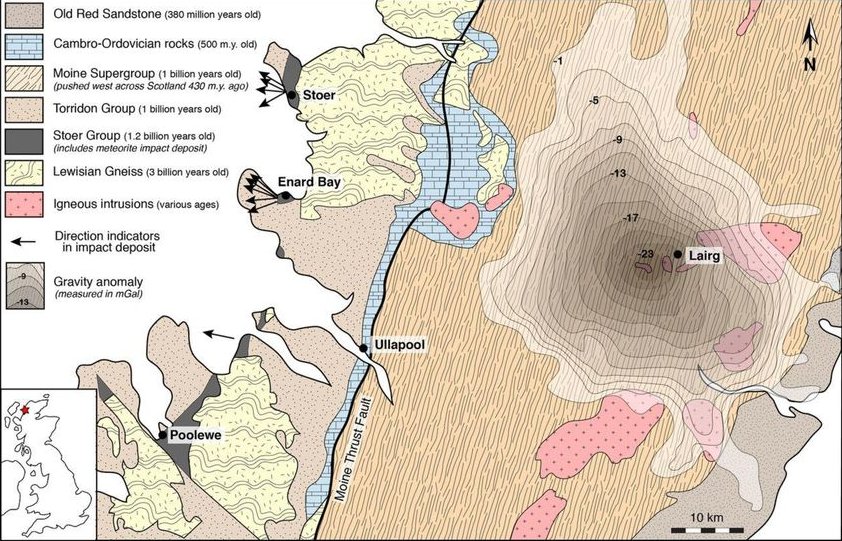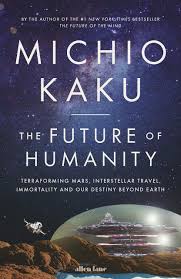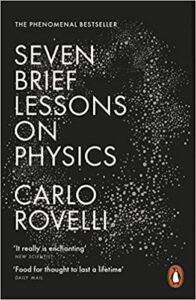Most nights of the year, if you are sitting looking up into a reasonably unpolluted night sky, there’s a reasonably good chance that you may see a shooting star – a meteoroid burning up in the Earth’s upper atmosphere. There are some nights where the likelihood of such an event is increased due to the Earth passing through the remains of comet debris deposited at particular points on Earth’s annual orbit of the sun. Good examples of such meteor showers being the Perseids, Geminids, Orionids, Leonids, Lyrids, all named after the constellation in which they appear. [Wikipedia info]
Occasionally, if it is big enough to survive, some of the celestial debris floating about the solar system makes it all the way through Earth’s atmosphere and lands on terra firma … with a thump!
Such thumps are not from the aforementioned comet debris, which is too small and not dense enough to survive an encounter with Earth’s atmosphere.
Instead, the thumps have originated from the asteroid field. Contrary to what Hollywood may have you think, with images of the Millennium Falcon twisting and turning through an asteroid field, our Solar System’s asteroid field is very sparsely populated. This is on account of the total mass of the field representing only a third of the mass of the Moon. Consider also that the asteroid field sits in an orbit between Mars and Jupiter and has a width of about 1.5 times the distance between the Earth and the Sun. That’s not a lot of material to spread around what is a vast orbital area! As a consequence, all the probes sent thus far to investigate the far reaches of the solar system have passed through the belt unscathed.
Nonetheless, when asteroids are pinged out from the asteroid field, possibly by the perturbations of Jupiter’s enormous gravity field, they can very occasionally, over the course of millennia, end up crossing the path of Earth.
In the 9th of June issue of the Journal of the Geological Society Kenneth Amor (Department of Earth Sciences, University of Oxford), broke the news that the largest meteorite impact in the British Isles, dating back to 1.2 billion years, had been identified off the NW coast of Scotland, about 20km due west of Lochinver in the Minch [article link]. The diameter of the crater is expected to be between 15 to 20 kilometres, resulting from the impact of an asteroid measuring between 1.5 – 2km across.
Not so far away to the east lies the village of Lairg, a place I’ve stopped at a handful of times for a morning bacon buttie before venturing out to nearby Munros. Little did I know at the time that this also sits near the centre of a gravity low, and that geologists now consider this to possibly be as a result of a buried impact crater which is some 40km in diameter. [Article in the Journal of the Geological Society]

So that’s two, near to home, impact craters that I learned about in June alone. Which got me thinking as to where other significantly large asteroid craters or meteorites can be found. Google maps here we come!
Near Newton Wold, in Yorkshire, owing to how small the meteorite was (25kg), there is no semblance of an impact crater. Instead a monument was erected by a certain Edward Topham. Although small in stature, in many ways the Wold Cottage Meteor impact was tremendous, kick-starting as it did the legitimisation of the idea of “stones falling from the heavens”. Up until this point, meteorites were seen by the learned classes as the babblings of superstitious peasants, and that any stones falling from the skies were the result of volcanic eruptions, or stones which had simply been struck by lightening.
Once the idea of stones falling from the heavens started to become legitimised, the old yarns from the common folk were taken more seriously and the learned folk also started seeing what had hitherto been hidden in plain sight. By way of example, the town of Nodlingen, in Bavaria, actually sits near the middle of a 24km impact crater known as Nördlinger Ries
Invariably, when these meteorites impact the Earth, they fragment and what remains is very small indeed. However, the Hoba meteorite, located to the east of Namibia’s Etosha Park near Grootfontein, is the largest known intact meteorite weighing in at an estimated 60 tonnes. It is also the most massive naturally occurring piece of iron known on Earth’s surface.
Then there is possibly the most well known impact crater of all. Situated near Flagstaff in Arizona, off interstate 44 can be found the Barringer impact crater.
Overshadowing all of these, and measuring in at 150km in diameter, the daddy of them all is the Chicxulub crater, buried under the Yucatan peninsula in Mexico. This is thought by many to be the root cause of the mass extinction event on the Cretaceous–Paleogene boundary (K–Pg boundary), slightly less than 66 million years ago, which saw the demise of the dinosaurs.
However, there is a growing body of evidence, led by professor Gerta Keller, which suggests that the Chicxulub impact happened 300,000 years too soon…
The alternative theory put forward by Keller and her supporters centres around the massive volcanic eruptions that lasted as much as 30 – 40,000 years in the Deccan Traps in India. Here the lavas are 2km thick and cover half a million square kilometres, and their outpourings coincided exactly with the end of the Cretaceous extinctions.
The aforementioned events, and many more besides plus background information as to their origins are covered in a book I recently read entitled Incoming!: Or, Why We Should Stop Worrying and Learn to Love the Meteorite by Ted Nield.
The book is not too bad a read, with the majority of the chapters being informative and well written, and from which much information can be gleaned as you find yourself effortlessly gliding through the pages. Other chapters, such as the beginning of part two entitled Target – Earth, are very stuttering in their delivery, hindered for the most part by a very erratic timeline in and around the French revolution and the start of the science of geology itself.
Reading Incoming! and happening upon the reference to the Scottish impact craters elsewhere, reminded me that I have a book that covers Scotland’s mountain environment which has been sitting on a bookshelf unread for a few years now.
This is now sitting on the “to read” pile!





